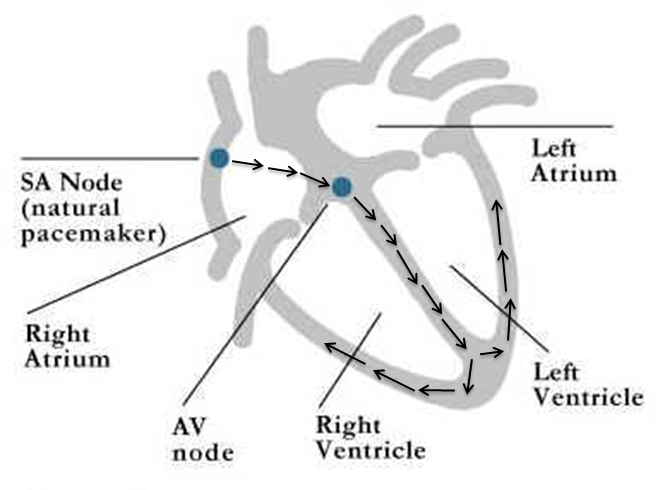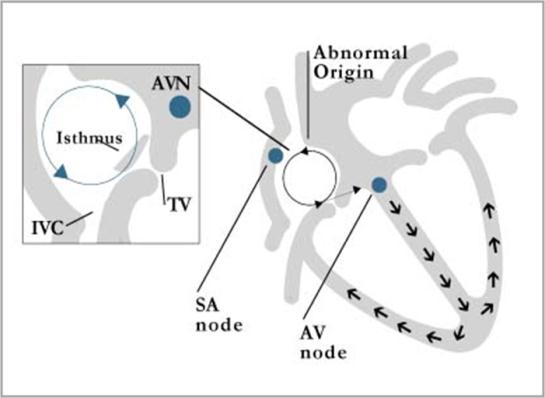Atrial Flutter
The heart is comprised of 4 chambers; 2 atria, which sit on 2 ventricles. An electrical “timekeeper”, called the sino-atrial node, is located at the top of the right atrium. This is the heart’s natural pacemaker, sending out regular electrical impulses that travel through pathways which run down the atria, through the ‘junction box’ of the heart (known as the AV node) and into the ventricles, allowing the heart to contract and relax regularly and pump blood around the body.

Normal ‘sinus’ rhythm (see text for details)
Atrial flutter can occur with a variety of conditions, but it also often exists on its own in patients with no other apparent problem. It can be present with atrial fibrillation as well, and it is important to investigate and treat any underlying causes. Like atrial fibrillation, atrial flutter carries a risk of developing life-threatening blood clots and stroke. In at least 50% of patients, no underlying cause is found. Treatment can be by with medication, cardioversion, occasionally a pacemaker and increasingly with catheter ablation.

Atrial flutter is commonly due to an abnormal ‘circuit’ in the right atrium and can be relatively easily cured by ablating (‘burning’) a small bit of tissue (Isthmus) in the heart between the tricuspid valve (TVC) and the inferior vena cava (IVC)